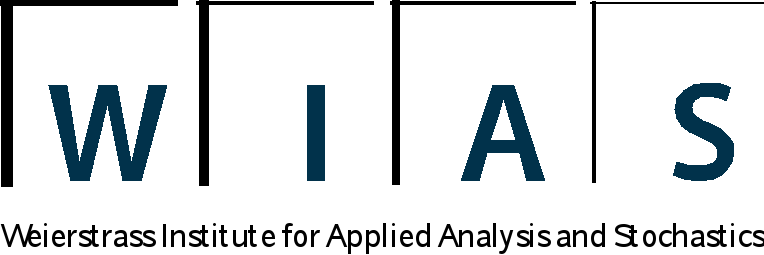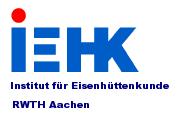New methods of measurements for the development of materials
|
Duration: |
October 2009 - October 2011 |
|
Project leaders: |
D. Hömberg¹ and W. Bleck² |
|
¹Weierstrass Institute for Applied Analysis and Stochastics,Mohrenstrasse 39, 10117 Berlin |
|
|
Tel: +49 (0)30 - 20372 491 (office) / - 20372 555 (secretary) |
|
|
²Institut für Eisenhüttenkunde RWTH Aachen, Intzestrasse 1, 52072 Aachen |
|
|
|
|
|
Responsible: |
|
|
Weierstrass Institute for Applied Analysis and Stochastics, Mohrenstrasse 39, 10117 Berlin |
|
|
Tel: +49 (0)30 - 20372 478 |
|
|
email: wolf.weiss@wias-berlin.de |
|
|
|
|
|
Cooperation: |
|
|
|
|
|
Support: |
Introduction:
For the planning of a heat treatment process for steel the knowing of the phase transformation kinetic is indispensably. These information can be drawn from two diagrams, the isothermal time temperature transformation (TTT) diagram and the continuous cooling transformation (CCT) diagram. Especially the latter one is important for engineering applications.
These diagrams are obtained from dilatometer experiments. However, the direct interpretation of the experimental results is difficult and imprecise. To get rid of these problems a model based inverse problem is approached. The model consist of the momentum balance, the energy balance and some ordinary rate laws for the evolution of the phase fractions. From the dilatometer experiment some quantities like the length of the whole probe and the temperature on the surface are given. The desired phase transformation kinetic for the CCT diagrams follows from the solution of an inverse problem.
Goals of the project:
-
Development of a mathematical model which is capable to describe an dilatometer experiment
-
Identification of the phase transformation kinetic by fitting dilatometer data from the solution of an inverse problem
-
Developing and implementation of a software tool for a more precise and time saving determination of the CCT diagrams
Recent Publications:
- P.Suwanpinij, N.Togobytska, Ch.Keul, W. Weiss, U.Prahl, D.Hömberg, W.Bleck, Phase transformation modeling and parameter identification from dilatometric investigations. WIAS Preprint No.1306 (2008), Steel Research International 79 (2008) No.10 pp.793-799.
- D.Hömberg, N.Togobytska, M. Yamamoto, On the evaluation of dilatometer experiments. WIAS Preprint No. 1298 (2008), Appl. Anal., 88 (2009) pp. 669-681.

